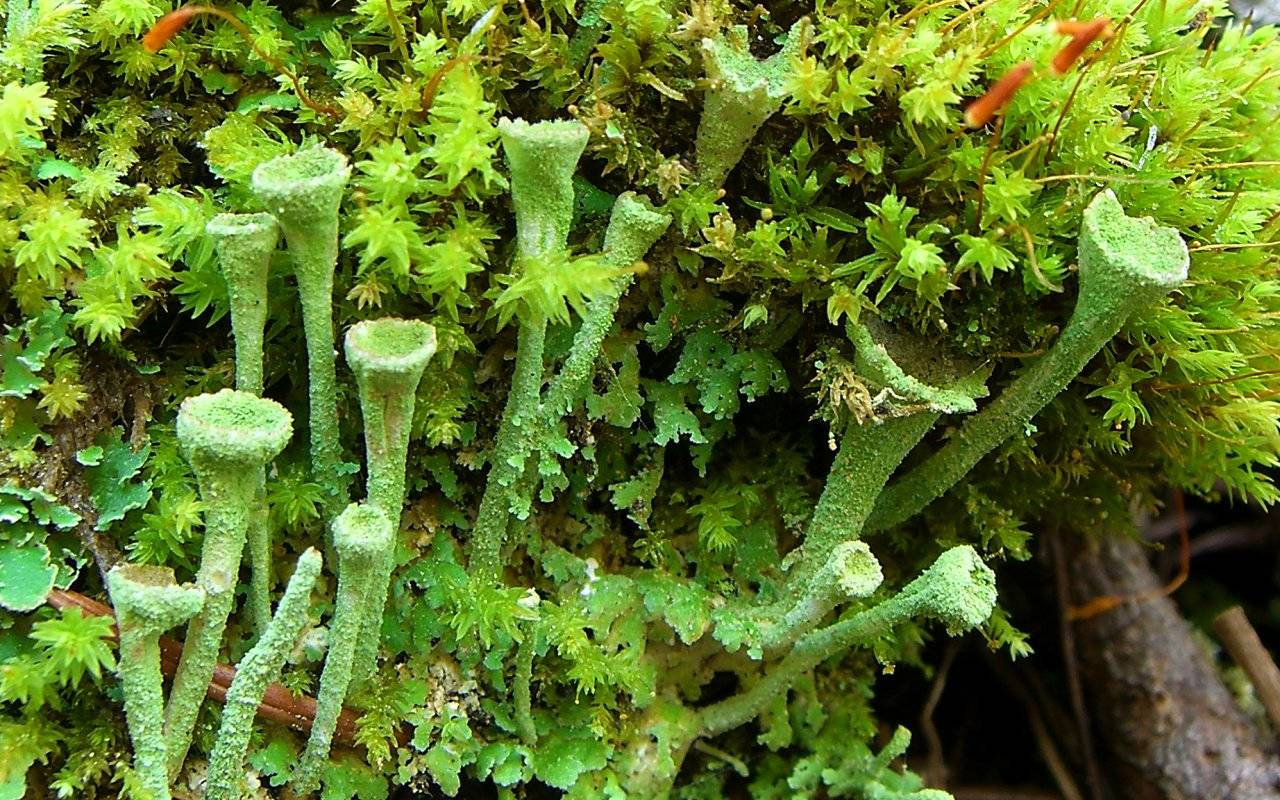By Mary F. Willson
For the Juneau Empire
Some weeks ago, I wrote about spore dispersal in bird’s nest fungi, in which the mature spores are held in a small cup and when a raindrop falls into the cup, the spores are splashed out. I decided to learn more about what other species use raindrops for dispersal. It turns out that raindrops have been put to work, so to speak, to disperse spores, seeds, little asexual propagules and even sperm.
[On The Trails: Fund with three fungal curiosities]
Splashcups are apparently the most common means of using raindrops. Seed dispersal from splashcups has been reported for many genera of plants, including some that grow in our area: Veronica (brooklime or speedwell), Sedum (stonecrop), Sagina (pearlwort), and Mitella (bishop’s cap). However, I’ve not been able to confirm that our particular species of these genera have this adaptation. Something to look for!
Puffballs Puffing from Bob Armstrong on Vimeo.
Splashcups for seed dispersal are typically small, just a few millimeters across, and more or less funnel-shaped, with the sides of the funnel not too steep and not too spread out. Small seeds are splashed out at various speeds, up to a meter or so away from the parent plant. Splashcup plants are generally small, herbaceous species; they grow in a variety of habitats.
Some mosses use splashcups too, for dispersal of sperm from male individuals. The raindrops give the sperm a head start on their way to receptive females, but once started, they have to swim to their final destination (thus needing a film of water to complete the journey). The juniper haircap moss (Polytrichum juniperinum) here in Southeast is one of these, and other local haircaps may also do things this way. Other moss genera in Southeast with this adaptation for sperm dispersal include Atricum, Plagiomnium, and Mnium, but again, I’ve not succeeded in confirming that our local species do.
Another moss uses splash cups made of modified leaves to disperse ‘gemmae’, which are asexual clusters of cells that can germinate and form new individuals. This moss is called pellucid four-tooth moss (Tetraphis pellucida); it disperses its sexual spores by wind. Although it is found in Southcentral Alaska, Yukon, and British Columbia — that is, all around our area, but there’s apparently only one record, so far, for Southeast (in Sitka).
The lung liverwort (Marchantia polymorpha) occurs all over Southeast and belongs to a genus known for gemmae dispersal by splashcups and raindrops. In addition, males bear their sex organs on little, stalked ‘saucers’ (not the technical term) and sperm are released onto these saucers. When a raindrop hits the loaded saucer, the sperm can be dispersed as much as 60 centimeters away. Then, they have to swim, in a film of water, to a female.
A familiar lichen genus is Cladonia, some of which are known as “pixie cups.” These make stalked cups that contain little asexual granules (technically called soredia) composed of bits of fungus and algae that are enough to start a new lichen individual. These tiny granules can be splashed up to a meter away by a raindrop, but they may also travel by wind.
Another type of raindrop-assisted dispersal is thought to occur in Tiarella (foam flower), which we often see here. The seed capsule is shaped like an old-fashioned sugar scoop, with a long lower lip. A rain drop hitting the lower lip could flip out the seeds. This spring-board mechanism is also seen in some club-mosses (Lycopodium, including our local L. selago), which disperse little vegetative, non-sexual propagules (called bulbils) this way.
Fungi have a couple of other unusual ways of using raindrops or at least water drops for dispersal. Some of the puffballs release spores when the tender top of the mushroom is struck by raindrops. Certain fungi (not specified in the available literature) release spores by a water-drop-driven catapult: There is one drop (apparently produced by the fungal spore) at the base of a spore and one (source not given) along the side of the spore. These two drops merge,creating a big enough drop with reduced surface tension so it breaks open, pushing the spore from its attachment and popping it loose.
Raindrops even get involved in pollination of flowering plants. In some buttercups (Ranunculus) and marsh marigolds (Caltha), rain splashes pollen from the anthers (where pollen is produced) to the receptive stigma of the same flower.
All those splashcups and springboards and catapults are evolved adaptations of the respective species. They function to the benefit of the plant or fungus by increasing reproductive success via successful dispersal.
However, raindrops may also have non-adaptive effects, such as transmission of foliar diseases. If a raindrop hits a leaf infected by bacteria, viruses, or fungus, it bounces, potentially carrying the infective agents with it in a water drop. The distance carried depends on many factors, including water-drop size, leaf shape and orientation and its motion when hit by the rain drop, and location of the original infection on the leaf. A complicated matter, indeed, but of some importance especially in agricultural monocultures.
• Mary F. Willson is a retired professor of ecology.“On The Trails” is a weekly column that appears in the Juneau Empire every Wednesday.

